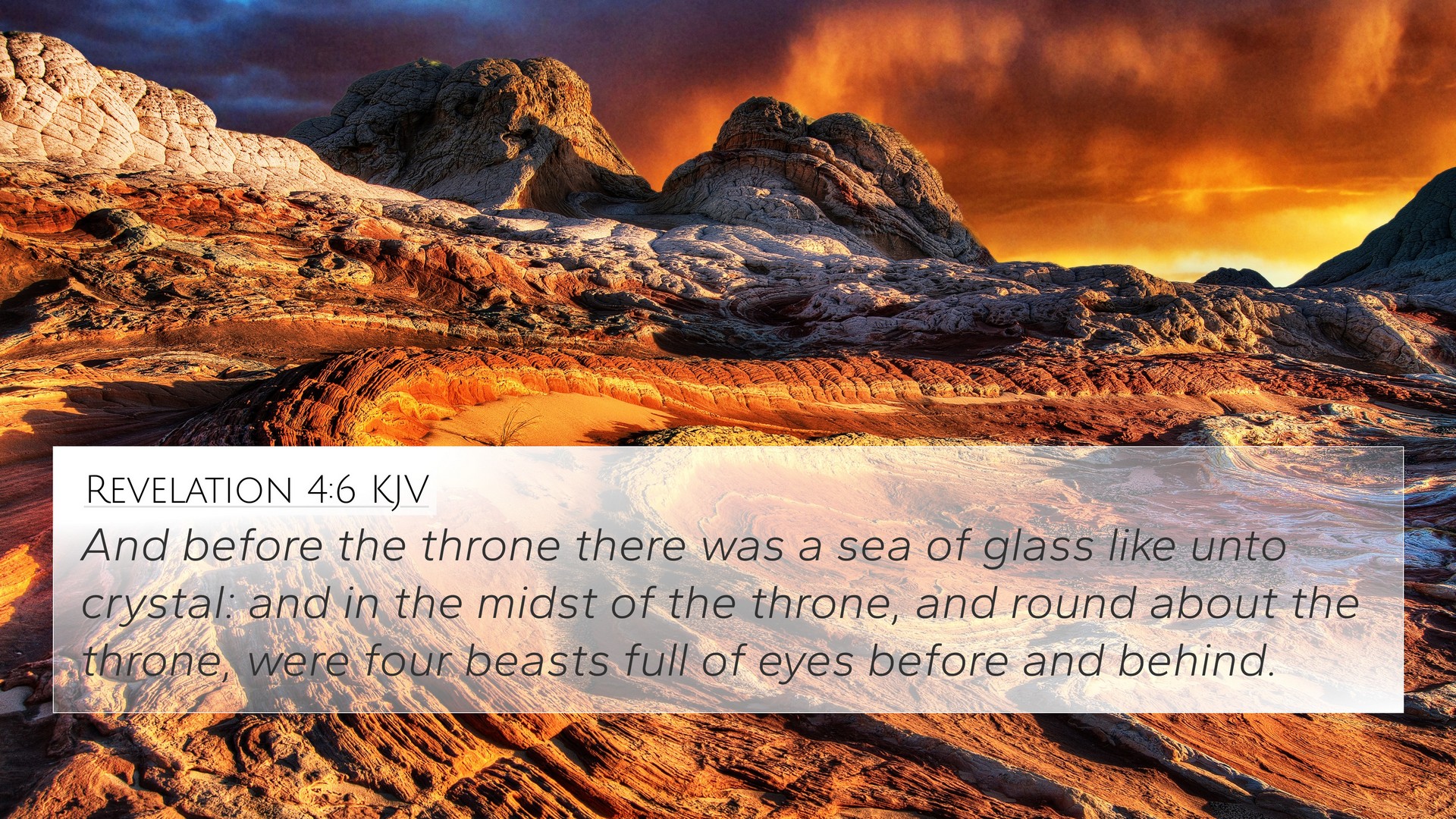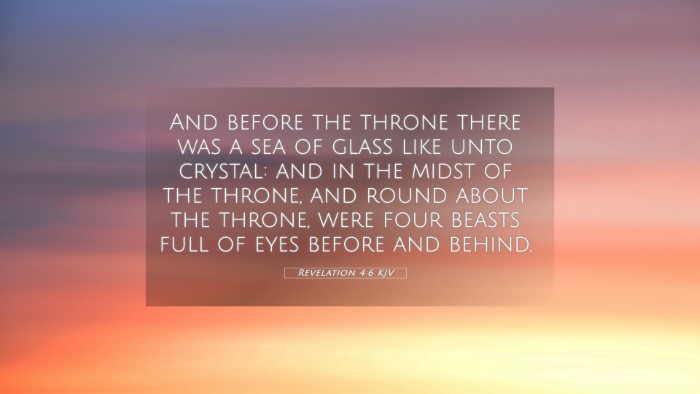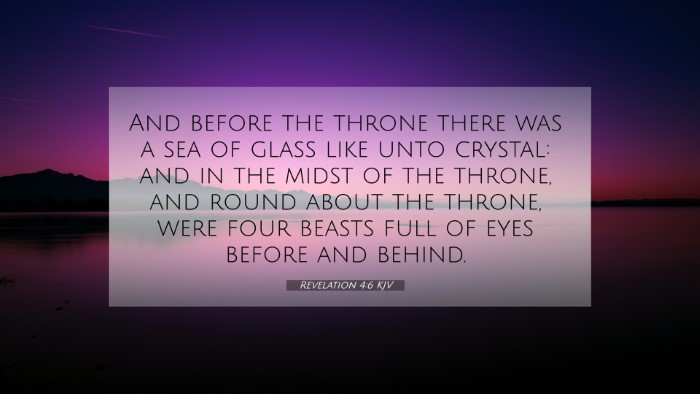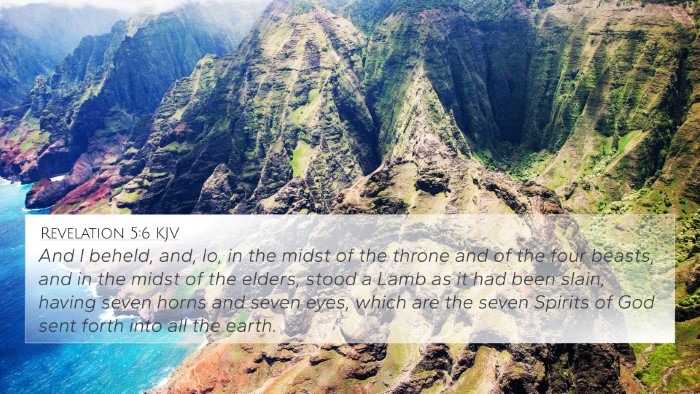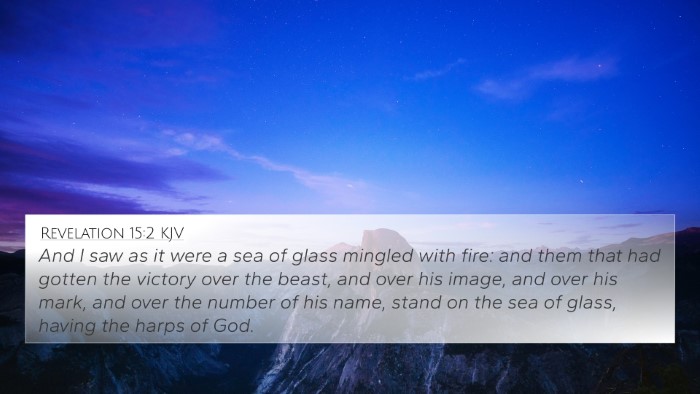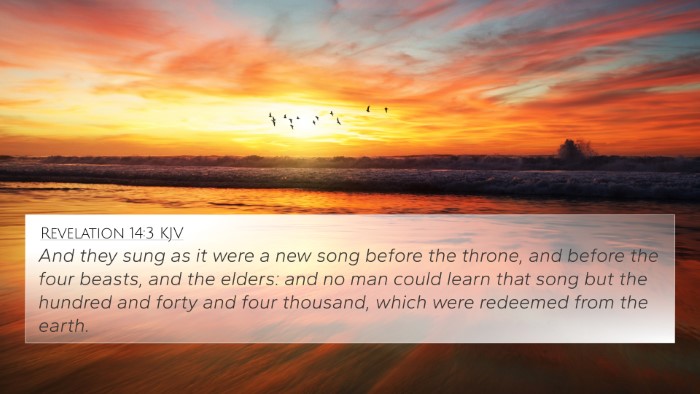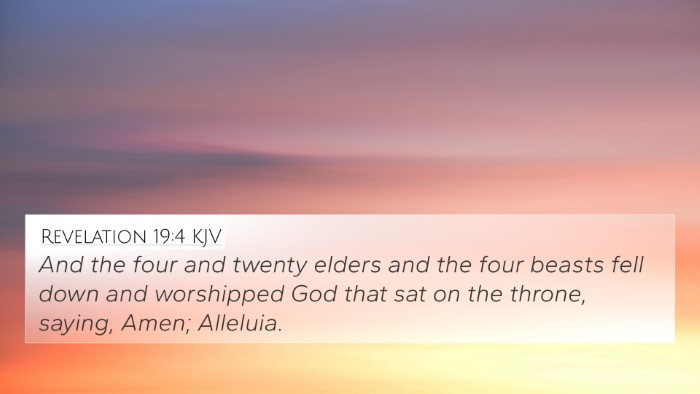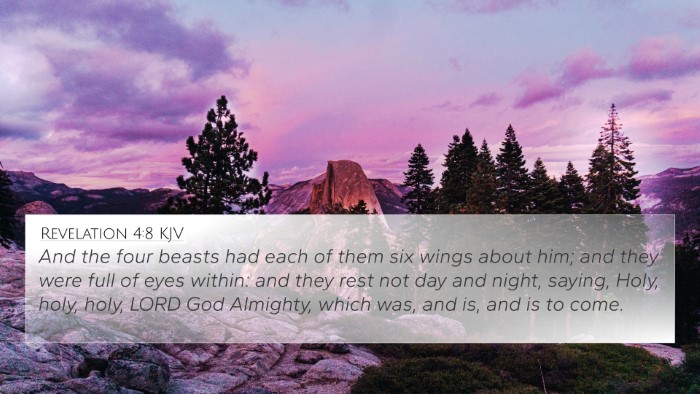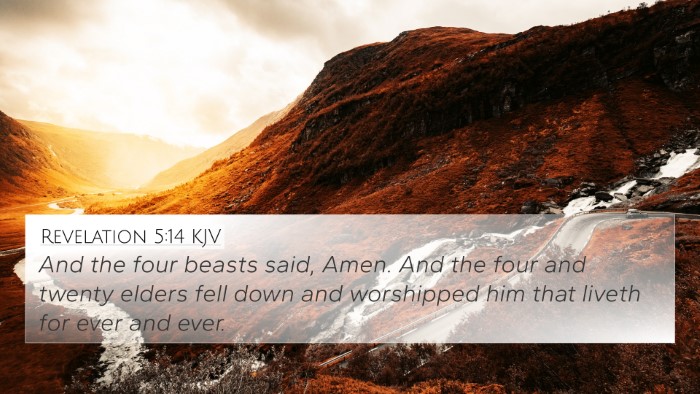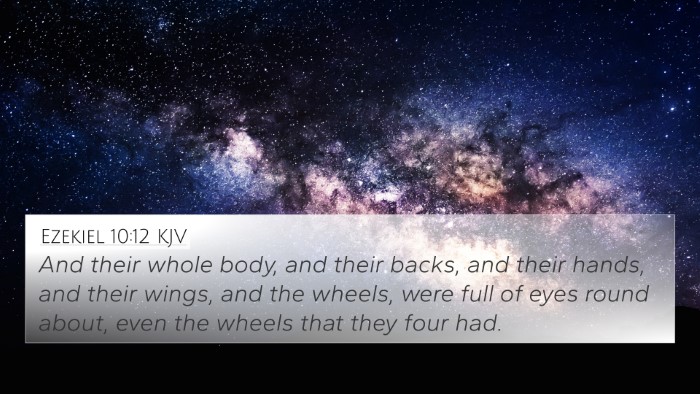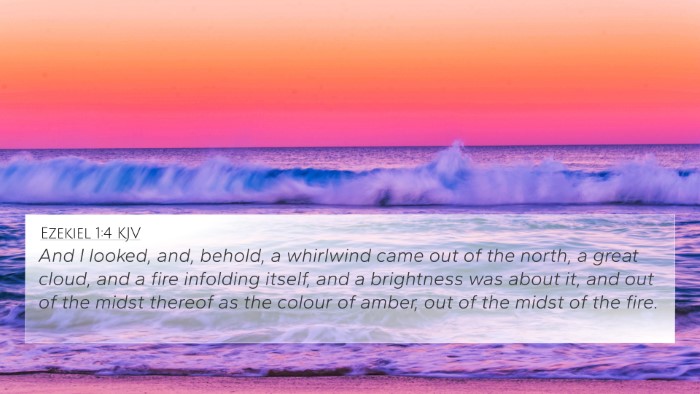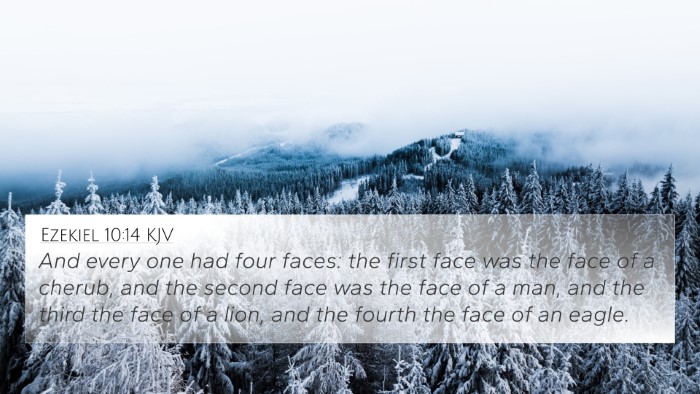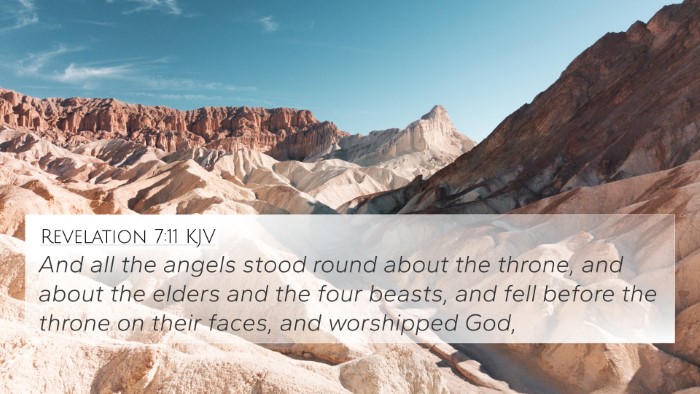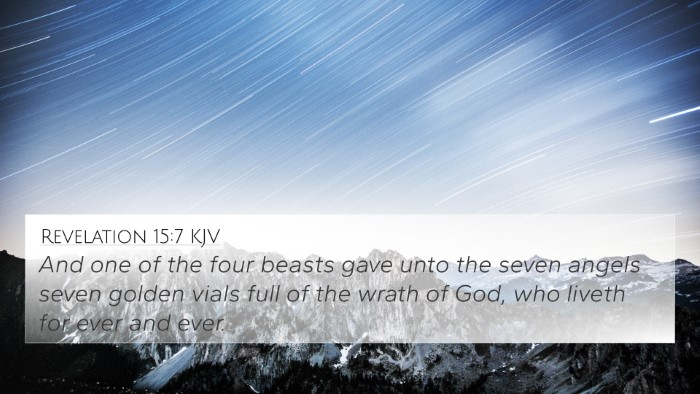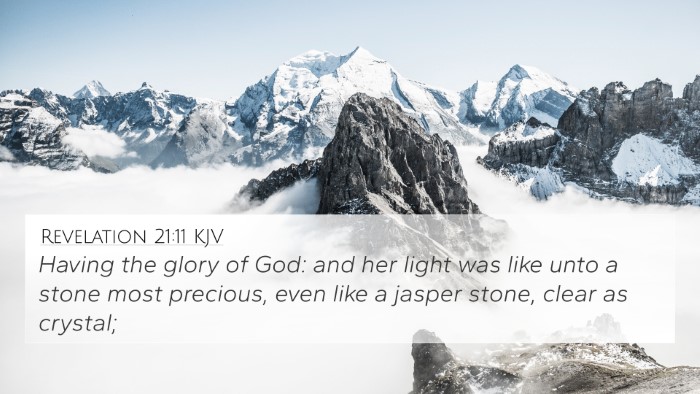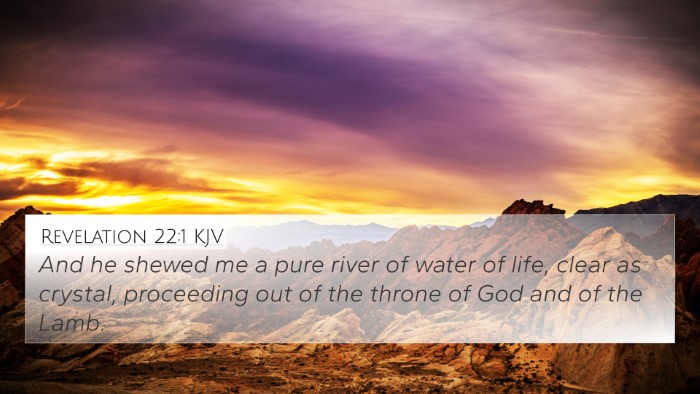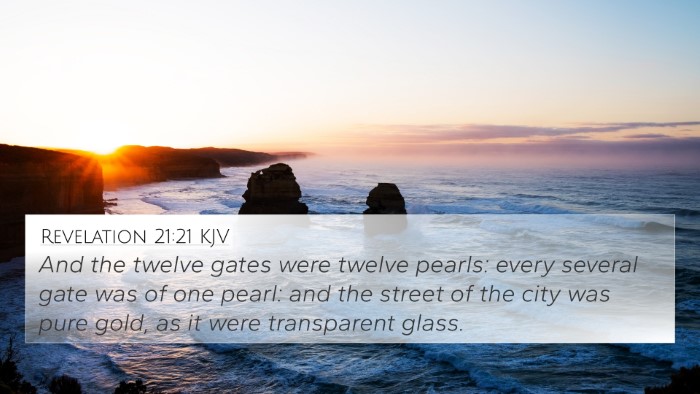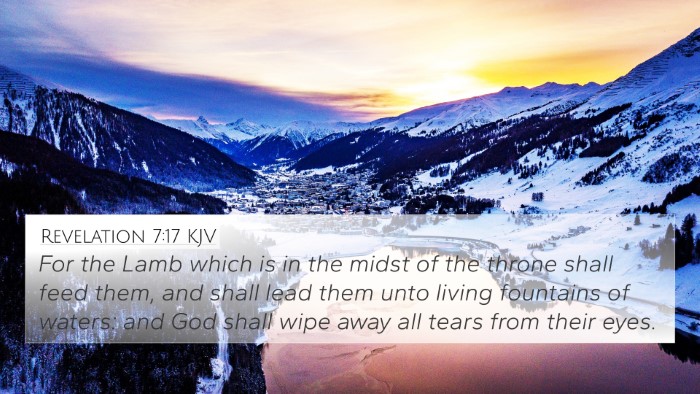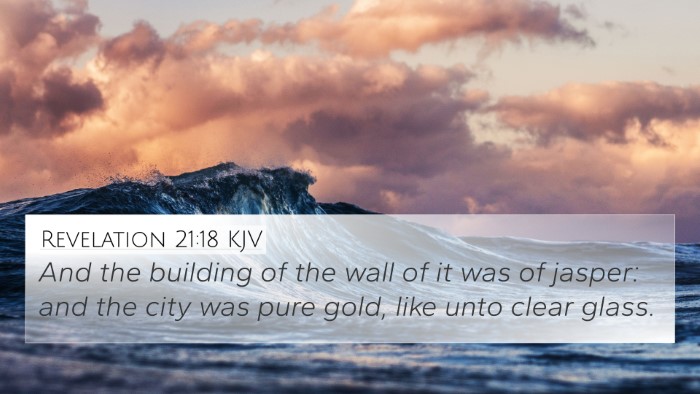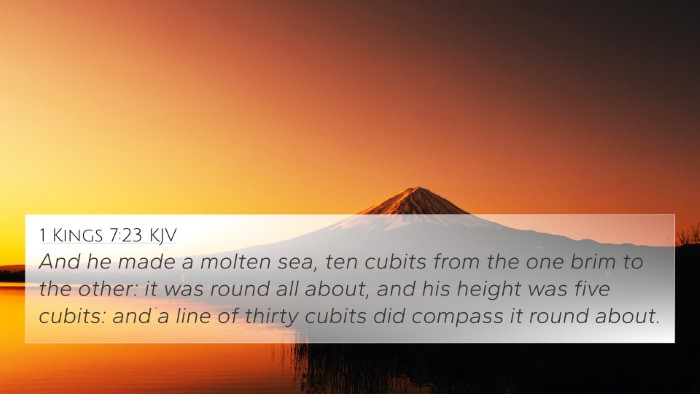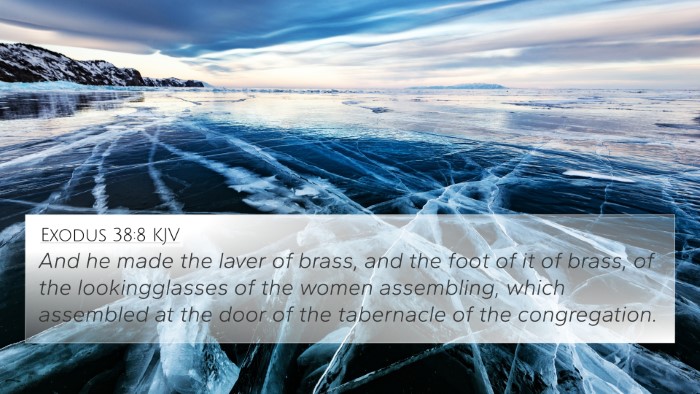Understanding Revelation 4:6
Revelation 4:6 states: "And before the throne there was a sea of glass like unto crystal: and in the midst of the throne, and round about the throne, were four beasts full of eyes before and behind." This verse is rich in imagery and symbolism, inviting deep exploration of its meaning.
Commentary Insights
Various public domain commentaries provide diverse perspectives on Revelation 4:6. Below is a synthesis of insights from Matthew Henry, Albert Barnes, and Adam Clarke.
Matthew Henry’s Commentary
Matthew Henry emphasizes the majesty of God’s throne and the serenity suggested by the sea of glass. He indicates that the sea represents a barrier and a place of reflection, symbolizing calmness amidst turbulence. The four living creatures, full of eyes, showcase the omniscience and omnipresence of God, constantly aware of all things.
Albert Barnes’ Notes
Albert Barnes focuses on the symbolic nature of the "sea of glass." He interprets it as purity and transparency, reflecting God’s holiness. The creatures around the throne signify the various attributes of God, with their many eyes suggesting an endless perception of spiritual realities. Barnes correlates this image with the seraphim in Isaiah, emphasizing their role in glorifying God.
Adam Clarke’s Commentary
Adam Clarke elaborates on the sea of glass as indicative of divine judgment and tranquility, linking it to the idea of the heavenly environment being a place devoid of chaos. He further details the appearance of the beasts, noting their symbolic significance in depicting aspects of creation and divine authority. Clarke also discusses the Hebrew roots of similar imagery found in Ezekiel’s vision.
Bible Verse Cross-References
Revelation 4:6 can be cross-referenced with several other Bible verses, enhancing our understanding through theme connections. Here are some significant references:
- Isaiah 6:2-3 - Vision of the seraphim that parallels the four living creatures.
- Ezekiel 1:5-10 - Similar descriptions of living creatures and their features.
- Hebrews 12:18-22 - Contrast between Mount Sinai and the heavenly Zion, emphasizing the splendor of God's presence.
- Psalms 104:24-25 - A reflection on the vastness and complexity of God’s creation.
- Revelation 15:2 - The imagery of glass mingled with fire illustrating divine judgment.
- Matthew 17:2 - The transfiguration of Jesus and the brilliance of His divine nature.
- Daniel 7:9-10 - The throne and the many eyes, echoing the omniscience of God.
Thematic Connections
When exploring thematic Bible verse connections, Revelation 4:6 plays a vital role in understanding the grandeur of God’s sovereignty and the cosmic order He has instituted.
Attributes of God
- Omniscience: The many eyes illustrate God's knowledge of all things - past, present, and future.
- Holiness: The sea of glass underscores God's purity and the lack of sin in His presence.
- Majesty: The imagery emphasizes the grandeur of God's authority over creation.
Connecting Old and New Testament
The connections between the Old and New Testaments regarding God’s throne and the beings around it are pivotal. The four living creatures seen in Revelation are reminiscent of the seraphim in Isaiah and the cherubim in Ezekiel, bridging the understanding of divine worshipers across both testaments.
Practical Applications
Through a comparative Bible verse analysis, believers can gain insight into their personal faith journeys:
- Recognizing God’s Sovereignty: Acknowledge God's ultimate authority and reign over the universe.
- Understanding Divine Purity: Reflect on the importance of holiness in one’s life in light of God’s character.
- Embracing Worship: Recognize that worship, as modeled by the beings around the throne, is a central aspect of faith.
Conclusion
In summary, Revelation 4:6 offers profound insights into the nature of God and His creation. The combined commentary from Matthew Henry, Albert Barnes, and Adam Clarke highlights the thematic connections and attributes of God, encouraging readers to delve deeper into scriptural cross-referencing and inter-Biblical dialogue.
